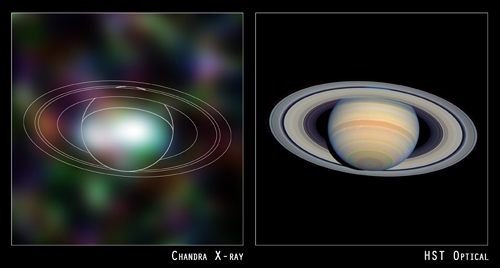
 |
 |
|
||||
|
Saturn: The 6th planet from the Sun, as seen at a distance of 890
million miles from Earth. Caption: Chandra's image of Saturn shows that its X-radiation is concentrated along the equator. The X-ray spectrum, or the distribution of X-rays according to energy, was found to be similar to that of X-rays from the Sun. This indicates that the X-radiation is due to the reflection of solar X-rays by Saturn's atmosphere. The optical image of Saturn is also due to the reflection of light from the Sun - visible wavelength light in this case - but the two images obviously have dramatic differences. The optical image is much brighter and shows the beautiful ring structures, which were not detected in X-rays. These differences occur because the Sun emits about a million times more power in visible light than in X-rays, and X-rays reflect much less efficiently from Saturn's atmosphere and rings. Scale: Each panel is 42 arcsec per side; the disk of Saturn is 17.5 arcsec in diameter Chandra X-ray Observatory ACIS Image |